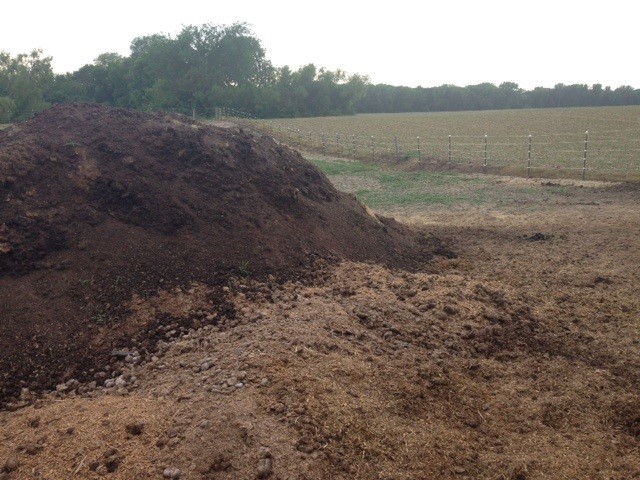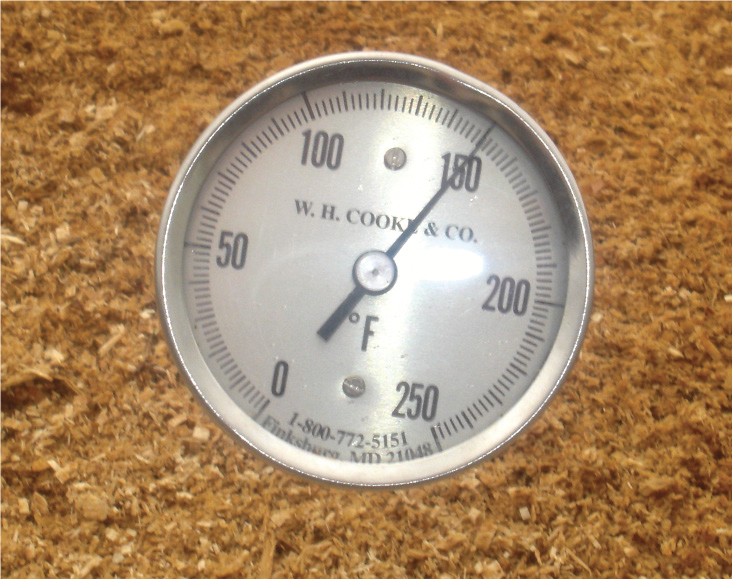An 8 step process for developing a horse manure management plan: Part 3 - Composting horse manure
Need to develop a horse manure management plan? Follow this 8 article series that discusses the components of developing a horse manure management plan.
In some cases, horse owners may not have a sufficient land base to appropriately make good use of manure spreading. In addition, spreading raw horse manure in combination with soiled bedding (stall waste) on your horse pasture is not an advisable practice. The reasons for this include the following: A) if you are spreading raw horse manure on your pasture or crop fields, you could be potentially spreading parasites and weeds seeds and B) stall waste with wood products such as sawdust or wood shavings can actually deplete the soil of nitrogen (needed for grass to grow) due to the breakdown of carbon. This can result in an undesired outcome when attempting to grow forage. For reference, grass clippings have a carbon to nitrogen ratio (C: N) of approximately 17:1. The carbon to nitrogen ratio, or C:N, of sawdust or wood shavings is approximately 500:1.
Michigan State University Extension suggests that composting may be a viable option for many horse owners in regard to horse manure management. Composting is the managed biological decomposition process that converts organic matter into stable, humus-like material. Microorganisms, including bacteria and fungi, break down organic components of manure and bedding into smaller particles. The end product of composting is a dark, earthy smelling product that is similar to potting soil.
Advantages of composting horse manure
- Reduces manure volume by half
- Kills most parasites, bacteria and weed seeds
- Breaks down bedding material
- Stabilizes nutrients into a product that can be used to enrich soil

Composted horse manure (left) vs. non composted horse manure (right). All photos by Tom Guthrie, MSU Extension.
As previously mentioned, composting is a managed process. There are four key factors that will determine the success of your composting efforts.
Key factors for composting horse manure success
1) A carbon-to-nitrogen (C:N) ratio between 15:1 and 40:1. Horse manure itself has a C:N ratio of 30:1 while wood products have a fairly high C:N ratio (approximately 500:1). This may prove to be a challenge in ensuring the appropriate C:N ratio. Generally speaking, less bedding in the compost results in a faster process. If you need to add nitrogen to the mixture, you can accomplish this by adding higher N content materials such as grass clippings (17:1), wasted hay (15-32:1), or N fertilizer to the pile (1 lb. of urea nitrogen per cubic yard of collected waste).
2) A moisture content range of 40 to 60 percent. As a general rule, compost should be moist to touch. When squeezing a handful of compost, it should feel like a damp sponge. If the pile is too wet, aeration or turning, mixing or moving the pile must be done to restart active composting. If too dry, water should be added, preferably by a uniform, consistent spray.
3) A temperature range of 100 to 150 degrees Fahrenheit. The rise in temperature to a range of 100 to 150 degrees F is a result and an indicator of composting activity and microbial respiration. Temperatures within this range enhance microbial reproduction. At 140 degrees Fahrenheit or higher, pathogens, weed seeds and fly larvae in the composting materials are destroyed. Low temperatures can be caused by too much or too little moisture, lack of oxygen and/or an inappropriate C:N ratio. Temperatures above 150 degrees F kill composting organisms and, therefore, are not desirable.

Long-stem thermometer used to monitor internal temperature.
4) An oxygen concentration greater than 5 percent. Aeration by turning, moving or mixing the compost batch promotes the growth of hardier, more robust aerobic bacteria by infusing air into the materials and providing a desirable oxygen concentration of 5 to 20 percent.
Other considerations
As far as a foundation base for a composting site, concrete is an excellent choice as it is easy to clean and maintain. Additionally, a concrete base can help prevent the leaching of nutrients from the compost pile into the groundwater. A base such as gravel, sand, wood chips or other materials is not recommended because it may make mixing and turning the material more difficult.
When selecting a site for composting manure, always remember to follow environmental stewardship practices and be aware factors such as prevailing winds, distance to property lines, wells, neighboring residences, slope of the site and distance away from any surface water.
Next up, Part 4 of this article series will discuss the ins and outs of Manure Transfer and Application.



 Print
Print Email
Email




